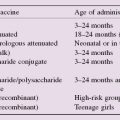Unlike viruses, bacteria are cellular organisms, mostly capable of fully independent life, but some live on or in larger animals some or all of the time. Indeed, it is estimated that each human is colonized by some 1014 bacteria, equivalent to 10 bacteria for every cell of the body. This microbiome is made up of several thousand different species, most of which are innocuous and may even have a beneficial role in enhancing human health. However, a few species can cause disease and, together with viruses, these now constitute the major infectious threat to health in developed countries. Since the discovery of antibiotics, bacterial infection has been controlled largely by chemotherapy. However, with the recent rise in antibiotic-resistant strains of bacteria, there is renewed interest in developing new or improved vaccines against the bacteria responsible for such diseases as tuberculosis, meningitis and food poisoning.
The usual destiny of unsuccessful bacteria is death by phagocytosis; survival therefore entails avoidance of this fate. The main ways in which a bacterium (top left) can achieve this lie in the capsule (affecting attachment), the cell wall (affecting digestion) and the release of exotoxins (which damage phagocytic and other cells). Fortunately, most capsules and toxins are strongly antigenic and antibody overcomes many of their effects; this is the basis of the majority of antibacterial vaccines. In the figure, processes beneficial to the bacteria or harmful to the host are shown in broken lines. Bacteria living on body surfaces (e.g. teeth) can form colonies (‘biofilms’) which protect them against both immunity and antibiotics. As with viruses, some of the most virulent and obstinate bacterial infections are zoonoses – plague (rats) and brucellosis (cattle) being examples. Bacteria that manage to survive in macrophages (e.g. tuberculosis [TB]) can induce severe immune-mediated tissue damage (see Fig. 37).
Cell Wall
Outside their plasma membrane (M in the figure) bacteria have a cell wall composed of a mucopeptide called peptidoglycan (PG); it is here that lysozyme acts by attacking the N-acetylmuramic acid–N-acetylglucosamine links. In addition, Gram-negative bacteria have a second membrane with lipopolysaccharides (LPS, also called endotoxin) inserted in it. Bacterial cell walls are powerful inducers of inflammation, largely through their ability to activate the Toll-like receptors of innate immunity (see Figs 3 and 5).
Flagella,
the main agent of bacterial motility, contain highly antigenic proteins (the ‘H antigens’ of typhoid, etc.), which give rise to immobilizing antibody. Some flagellar proteins activate the Toll-like receptor TLR5 (see Fig. 5).
Pili
are used by bacteria to adhere to cells; antibody can prevent this (e.g. IgA against gonococcus).
Capsule
Stay updated, free articles. Join our Telegram channel

Full access? Get Clinical Tree




